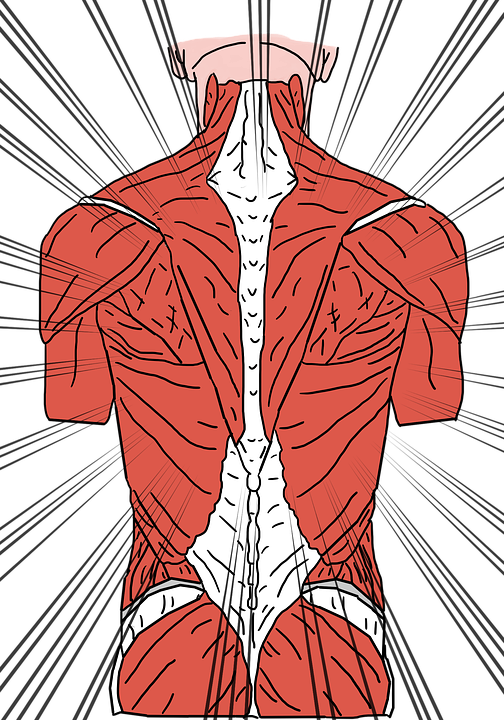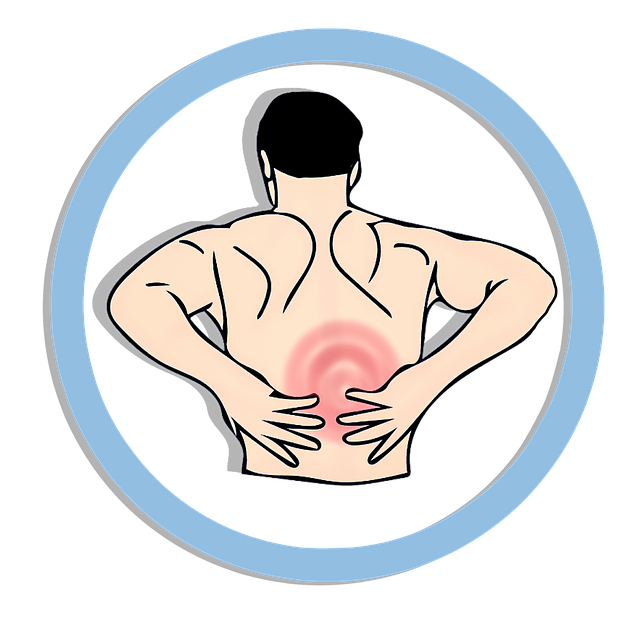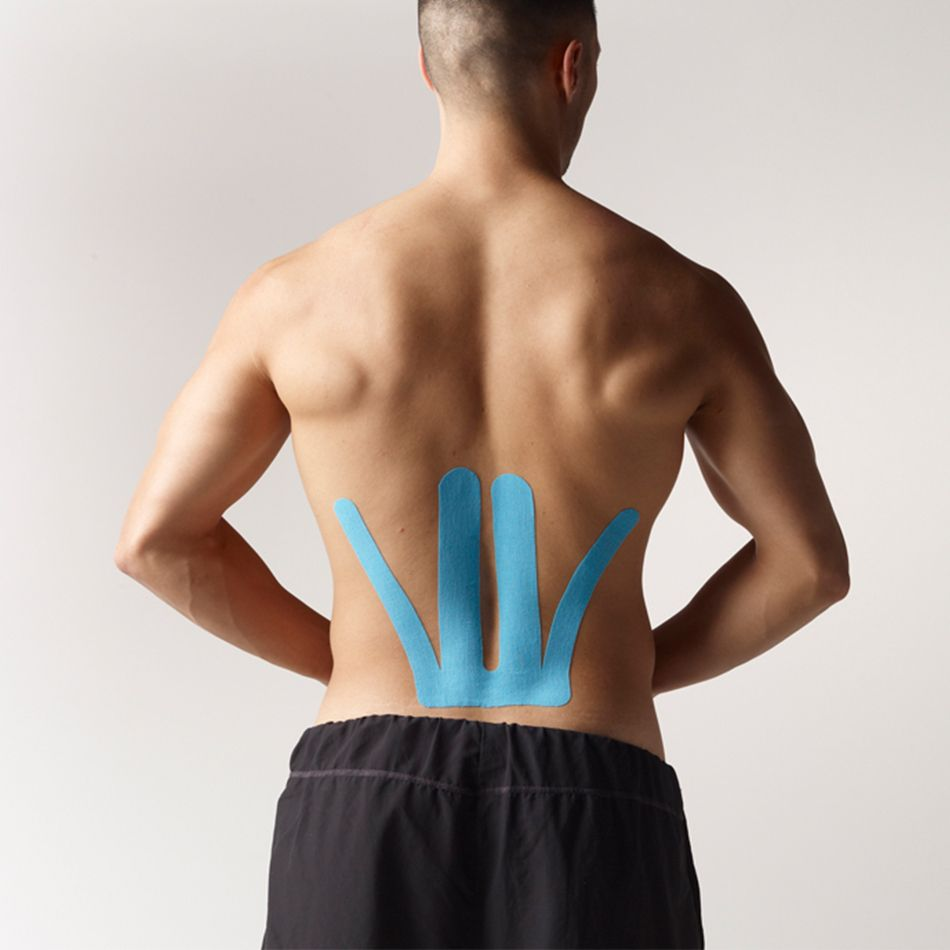The lower back area experiences more pain and health issues than other parts of the body. As a nation, many of us spend a significant amount of time sitting during workdays, which has led to a dramatic increase in minor to severe back problems. The back area includes the cervical, thoracic and lumbar regions. The lumbar muscles and spine is located in the lower back area and is especially susceptible to straining and inflammation. This is an issue many people have, from those that work continuously to Olympic athletes. Lumbar strain, inflammation, or sprain can be treated with kinesiology tape to create stability, relieve pain, swelling, and tightness.
Kinesiology tape has been used to help relieve pain, inflammation, and accelerate healing time. It’s important to learn how to apply it effectively, understand how it works and treats patients and how you can prevent lumbar muscle pain from recurring. In this article, we’ll provide you with comprehensive information about the effectiveness of kinesiology tape for lumbar muscles and how it can work for you.
Causes of Lumbar Muscle Pain
The lumbar spine and muscles are located in the lower back area. They can become inflamed, strained or sprained and cause muscle spasms when that happens. Lumbar muscle strains and spasms are the most common type of lower back pain. This is because the lower back is responsible for supporting and carrying the weight of the upper body movements. The lumber muscles become strained when these muscles are overworked or abnormally stretched. When the ligaments in the muscles, which are the tissues that hold the bones in the area together become torn from the attachments, the result is lumbar muscle strain. Not only can lumbar muscle strain be irritating to deal with, but it can also become debilitating.
In addition to overstretching the muscles, lumbar muscle pain can also be caused by stress, bad posture, being overweight, or a severe cough. It may not always be possible to verify the source of the problem, however, once you experience it, it’s imperative to your health to begin treatment.
Why Use Kinesiology Tape For The Lower Back
Taping the lower back when experiencing lumbar muscle pain can be highly effective. The ultimate goal of taping is to relieve the pressure and pain you’re experiencing and promote healthy blood circulation to allow the back to return to a healthy posture and optimal function. Kinesiology tape can generally provide immediate relief to the lower back area. An affordable, safe, and easy-to-use, easy-to-apply method of treatment, kinesiology tape is a viable treatment for many types of back issues and other body pain. Thin, durable, and comfortable, kinesiology tape can provide ample support and care without restricting movement and range of motion to the area.
Essential Tips For Lumbar Muscle Taping
Taping the lower back area can be done in a variety of ways to help treat the area. Below are three key tips to consider when applying the kinesiology tape to your lower back area:
- Create Tension: Focus on how your joint moves in the area and attempt to create tension with the kinesiology tape. To do so, move into a child’s pose, which flexes the lower back naturally and apply the tape.
- Proprioception: Skin is naturally quite sensitive and with the kinesiology tape creating tension in the area, this gives the brain receptors feedback to increase stability within the taped joint area.
- Stretching: The amount of stretch the tape has is important for the stability of the area. The amount of stretch required can vary, however, about 20%-50% stretch is effective to achieve the results you desire.
How Does Kinesiology Tape Work On The Lower Back?
When the body becomes injured, fluids can build up in the area, causing it to inflame and become increasingly swollen. When there is too much inflammation in the area, the excess fluid cannot be removed properly by the lymphatic system. Compressed lymphatic system vessels cannot deliver sufficient oxygen and optimal nutrients to the tissues that need to heal. Once the kinesiology tape is applied to the area, it lifts the skin from and forms a space that allows blood circulation and lymphatic flow to reduce inflammation and pressure.
Once the blood flow becomes completely restored, the nutrients and oxygen will be able to reach the area and heal damaged tissues much more easily.
Aiding incomplete muscle recovery and preventing and treating spasms, sprains, cramps, and inflammation, the tape allows the user to continue their day-to-day activities without feeling restricted. Kinesiology tape can even prevent future back injuries from occurring in the future. Wearers can apply and keep the tape on for several days to enjoy full therapeutic benefits without any restrictions or discomfort. For both consistent and recreational athletes, it’s important for them to be able to continue their physical activities and not have any downtime due to injury. Kinesiology tape provides support to the lower back area without restricting the upper and lower body’s range of motion. Using the tape, along with other therapeutic exercises and treatments, can expedite healing time and allow you to get back to your daily activities and sports without hindrance.
SpiderTech’s line of high-quality, effective kinesiology tapes is the most viable taping solutions available on the market today. Easy-to-apply and use, SpiderTech kinesiology is superior in durability, comfort, and protecting the skin while relieving the area of pain and accelerating healing time. Along with enhancing muscle strength and tone, these taping methods are developed and meticulously tested by world-class athletes to ensure customers are receiving highly reliable products. SpiderTech kinesiology taping solutions make a world of difference for each individual that wears it. Visit their website to browse their kinesiology taping solutions.
Author’s Bio
Ellie King is a Content Writer for BreezeMaxWeb: Online Media Solutions writing blogs and content for the company’s clients’ websites. Graduating from Brock University with a Bachelor’s Degree in Journalism, Ellie ventured as a freelance journalist for a year covering politics, social issues, music, and culture and has published articles based on said subjects.



